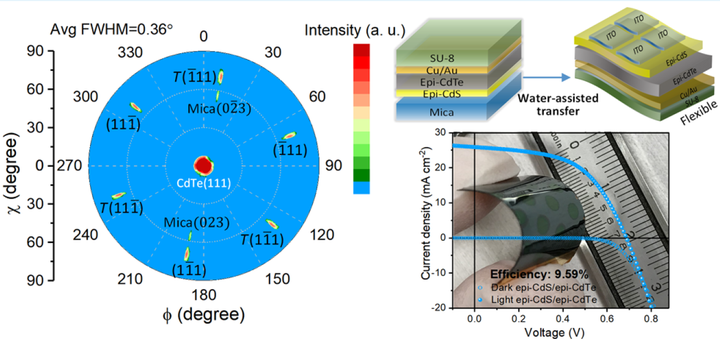Epitaxial CdTe Thin Films on Mica by Vapor Transport Deposition for Flexible Solar Cells

Abstract
Most high-quality CdTe thin films are epitaxially grown on single-crystalline substrates through chemical bondings by either molecular beam epitaxy or metalorganic chemical vapor deposition. The epitaxial CdTe films are rarely applied in electronic or optoelectronic devices because of the rigid single-crystalline substrate. We present high-quality CdTe films epitaxially grown on mica by vapor transport deposition process through weak interface interactions. The full width at half-maximum (fwhm) of the X-ray diffraction rocking curve of CdTe (111) and the fwhm of azimuthal in-plane angular dispersion of CdTe (111) were 0.23° and 0.36°, respectively. The weak interaction at the interface enables a transfer of the epitaxial film from mica onto other flexible substrates for applications. The epitaxial CdTe film was separated from the mica substrate by the surface tension of water during immersion and then transferred onto a flexible SU-8 photoresist substrate for the fabrication of CdTe solar cells. We successfully fabricated the flexible all-epitaxial, epi-CdS/epi-CdTe solar cells with a power conversion efficiency of 9.59%, which showed low interface defects and high diode quality compared to the poly-CdS/epi-CdTe solar cells.